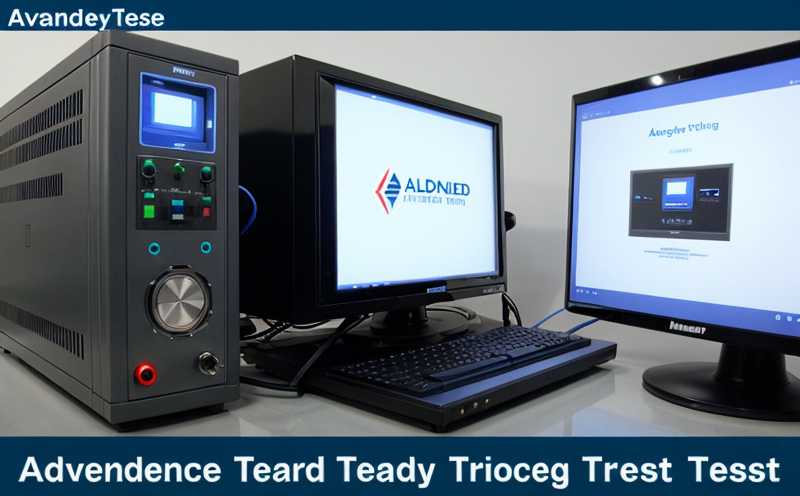IEC 60068-2-2 Dry Heat for Advanced Device Process Testing
The International Electrotechnical Commission (IEC) standard IEC 60068-2-2 defines the test conditions and procedures for assessing the thermal stability of electronic devices under dry heat. This standardized testing is essential in ensuring that semiconductor and microchip products meet stringent quality and safety requirements, particularly during manufacturing processes where temperature extremes can impact device reliability.
Advanced device process testing with IEC 60068-2-2 involves subjecting the semiconductors or microchips to controlled dry heat environments. The goal is to evaluate how these devices perform under various temperature conditions, which helps manufacturers identify potential weaknesses and optimize their designs for reliability and durability.
During the testing process, specimens are placed in a climatic chamber where they are exposed to specific temperature ranges over predetermined durations. These parameters are meticulously chosen based on industry best practices and real-world use cases. The standard specifies that tests should be conducted at temperatures ranging from 105°C up to 200°C for periods of time varying between 48 hours and several weeks, depending on the device's intended application.
The testing environment must closely mimic real-life operating conditions as much as possible. For instance, some advanced devices used in automotive or aerospace applications may require exposure to extreme temperatures that they will encounter during operation. By simulating these conditions accurately, engineers can identify issues related to thermal shock, solder joint reliability, and overall device integrity.
Preparation of the specimens prior to testing is critical for accurate results. This includes cleaning the devices thoroughly to remove any contaminants or residues that could affect test outcomes. Additionally, it’s important to ensure that all components are properly assembled according to manufacturer specifications before placing them in the climatic chamber. Properly preparing the samples ensures consistent and reproducible data.
Once prepared, specimens undergo rigorous testing using state-of-the-art equipment designed specifically for IEC 60068-2-2 compliance. This typically includes monitoring parameters such as resistance changes, dielectric strength, capacitance variations, and leakage currents throughout the test duration. Monitoring these metrics allows technicians to assess whether the device maintains its electrical characteristics within acceptable limits despite exposure to elevated temperatures.
The results of IEC 60068-2-2 testing play a crucial role in ensuring that semiconductor and microchip products are reliable, safe, and perform optimally across all intended operating conditions. Compliance with this standard provides confidence among both manufacturers and end-users regarding the quality and robustness of these critical components.
Compliance with IEC 60068-2-2 also supports broader industry goals related to sustainability by helping reduce waste associated with failed products during manufacturing stages or after deployment. By identifying potential defects early in the development lifecycle, companies can minimize resource consumption and environmental impact associated with producing substandard parts.
Understanding how different materials behave under extreme temperatures is key for developing next-generation semiconductor technologies that meet increasingly stringent performance requirements while remaining cost-effective. Testing via IEC 60068-2-2 ensures that these cutting-edge devices can withstand the harshest operating environments without compromising on quality or durability.
In summary, implementing IEC 60068-2-2 dry heat testing is not just about meeting regulatory requirements but also about enhancing product performance and ensuring customer satisfaction by delivering reliable electronic components capable of withstanding challenging environmental conditions throughout their lifecycle.
Applied Standards
The primary standard applied in this service is IEC 60068-2-2, which provides detailed guidelines for conducting dry heat tests on electrical and electronic products. This international standard ensures that all components undergo consistent testing procedures to accurately assess their thermal stability.
- IEC 60068-2-2: Specifies the test conditions and methods used to evaluate the effects of high temperatures on electronic devices.
- ISO/TS 16949: A quality management system standard tailored for automotive suppliers, ensuring consistent product quality across global markets.
- ASTM E2583-07(2015): Offers additional guidance on thermal cycling tests used in semiconductor manufacturing processes.
- EN 60914: Provides standards for low-voltage electrical equipment, including safety requirements pertinent to thermal endurance testing.
These standards work together to provide a comprehensive framework for ensuring that advanced semiconductor and microchip devices meet all necessary quality assurance criteria during their development and production phases. By adhering strictly to these internationally recognized guidelines, laboratories can ensure accurate and reliable test results that are valid across multiple jurisdictions.
Environmental and Sustainability Contributions
The implementation of IEC 60068-2-2 dry heat testing plays a significant role in promoting environmental sustainability within the semiconductor industry. By ensuring that devices can withstand extreme temperatures, manufacturers are able to design products with longer lifespans and reduced need for frequent replacements or repairs. This reduces electronic waste generated by premature failures due to overheating.
Moreover, compliance with these standards helps reduce energy consumption during both manufacturing processes and product usage. Efficient thermal management ensures that less power is required to cool down devices, leading to lower carbon footprints throughout the supply chain. Additionally, testing for durability enhances overall reliability, thereby minimizing post-production support costs associated with troubleshooting faulty units.
From an environmental perspective, adhering to IEC 60068-2-2 contributes positively by fostering innovation towards more sustainable manufacturing practices. For example, manufacturers can explore new materials and designs that enhance thermal performance without compromising on energy efficiency or cost-effectiveness. Such advancements contribute to reducing the ecological impact of electronic devices over their entire lifecycle.
Another benefit is the promotion of circular economy principles within semiconductor production cycles. By ensuring robustness early in the design phase, companies can extend product lifespans significantly, encouraging reuse and recycling efforts downstream when products reach end-of-life stages. This approach aligns closely with broader sustainability goals aimed at reducing resource depletion and waste generation.
In conclusion, IEC 60068-2-2 dry heat testing serves as a cornerstone for environmental stewardship within the semiconductor sector by supporting reliable product development processes that minimize negative impacts on ecosystems while fostering continuous improvement towards greener technologies.





